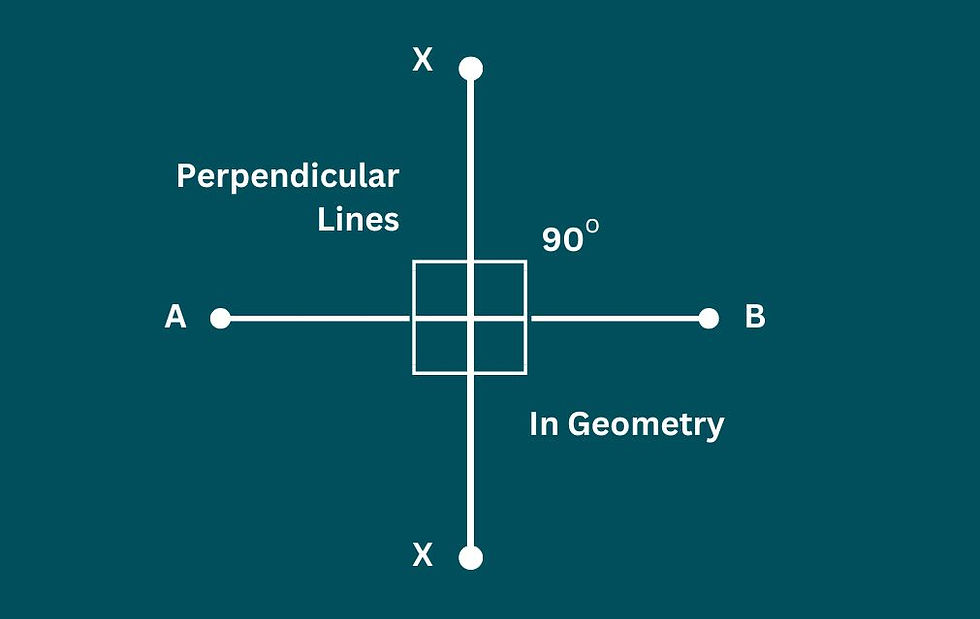Exploring the Relationship Between Perpendicular Lines in Geometry
- muhammadmoazzamamj
- Nov 22, 2024
- 2 min read
Updated: Jun 29

Perpendicular lines are key concepts in mathematics and especially in geometry. These concepts include slops, intersections and angles. Perpendicular lines are always at a 90 degree angle to each other. In this blog post US ELITE TUTORING will guide you through these important concepts related to Maths and Geometry.
Definition of Perpendicular Lines
Two lines intersecting each other at a 90 degree are known as perpendicular lines. When two lines intersect to form a straight angle, they are said to be perpendicular to each other. Perpendicular lines are denoted by "⊥", for example line AB ⊥ XY.
Furthermore, when two lines intersect at an angle of 90 degree are known as perpendicular lines. This 90 degree angle is also known as a perfect corner.
Key Characteristics of Perpendicular Lines
perpendicular lines can be distinguished from one another as they pass each other in right angles.
The product of the perpendicular lines is -1 in a coordinate plane.
In a Cartesian coordinate system, a horizontal line with a slope of 0 is always perpendicular to a vertical line with an unknown slope.
Examples of Perpendicular Lines
The grid lines on the graph paper are examples of perpendicular lines intersecting each other at a 90 degree.

Junctions on the street are mosty intersecting each other at a 90 degree making two streets perpendicular to each other.

Importance of Perpendicular Lines
Perpendicular lines and right angles are considered very important in mathematics and architecture. Perpendicular lines are required to define various geometric shapes, such as squares and rectangles, that have right angles at their corners. Perpendicular lines are widely used in building designs and maps, where 90 degree angles provide stability to the structure. Lastly, understanding perpendicular lines is necessary to calculate angles, slopes, and distances in the coordinate system.
Application of Perpendicular Lines
The Applications of perpendicular lines and 90 degree angles are used in the world, For example, beams meeting columns or walls meeting floors are examples of perpendicular structures that offer stability and accuracy.
Perpendicular lines and angles are used in mapping and navigation, these concepts prove vital to find locations etc.
Perpendicularity is used by artists to create compositions with symmetry and balance.
Fun Facts About Perpendicular Lines
The fact that certain tree branches grow at right angles to their trunks is a common example of perpendicularity in nature. Because of this alignment, the branches receive the most sunlight possible, which promotes the growth and survival of the tree. Similar to this, the perpendicular bisector in mathematics has left a lasting legacy of perpendicularity. In geometric constructions and proofs, a perpendicular bisector, a line that splits a segment into two equal parts at a 90° angle, is a crucial tool for problem-solving and precise design creation. The importance of perpendicularity in mathematical and natural systems is demonstrated by these two examples.
Conclusion
Perpendicular lines and 90 degree angles are corner stones of geometry and mathematics. Shapes and angles are easily understandable due to perpendicular lines and angles. Understanding and using the concept of perpendicularity can result in more accurate and imaginative work, regardless of your profession student, engineer, or artist.




Comments